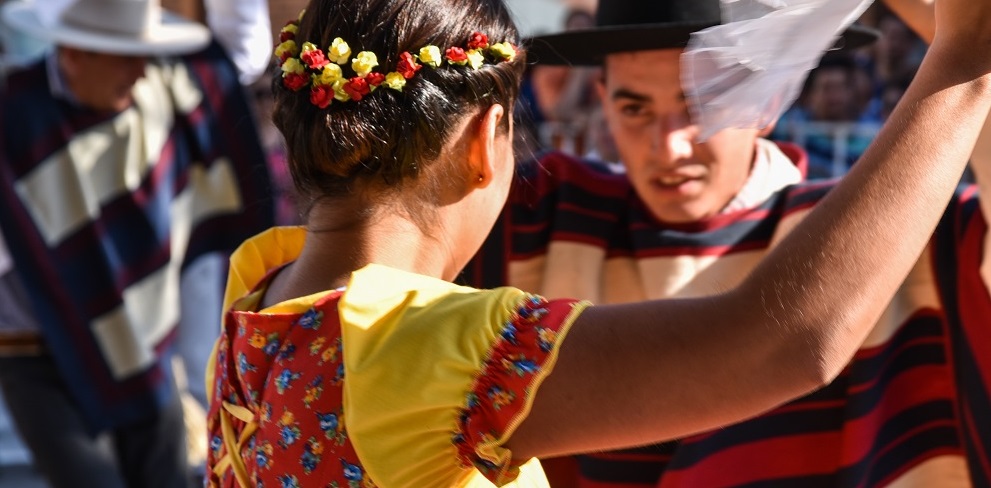Fiestas Patrias in Chile: Culture, gastronomy and traditions
By: Gabriela Salina - 25 August, 2022

We love September! It is one of the happiest months of the year because in Chile we celebrate Fiestas Patrias, a celebration including delicious empanadas, anticuchos, cueca dances and creole games. All these traditions show the essence of Chilean culture.
At the beginning of the month, flags embellish the cities, the ramadas appear, and the activities and celebrations to enjoy a glass of red wine with friends are a must. But what are we celebrating?
Let’s learn some history
Fiestas Patrias in Chile are only two days officially, but Chileans are used to beginning the celebration when the calendar changes to September. This celebration is on September 18th and 19th, a holiday for Chileans. These days are “inalienable”, which means that all citizens must take these days off unless their jobs are necessary for the running of the country or if they work in services such as restaurants, and hotels, among others.
18th is the anniversary of the First Cabinet Meeting, which took place in 1810, and -according to historians- it would start the independence process. Meanwhile, on 19th the Glories of the Army is celebrated, a commemoration that has been official since 1832, but of which there is a record since 1817.
Celebrations everywhere
During the Fiestas Patrias, the plazas, parks and the countryside in Chile turn into traditional places with handicraft stands, food trucks with typical Chilean cuisine, dance floors and outdoor music. It adds to the fact that September is a month of warm and moderate temperatures, ending the Chilean winter and opening the doors to spring.
 📸: Diego Fontecilla
📸: Diego Fontecilla
If you want to celebrate like a true Chilean, we will tell you everything you need to know to celebrate our Fiestas Patrias.
Fondas and ramadas
During the Fiestas Patrias in Chile there are no discotheques, there are fondas and ramadas. What? Let us explain.
“Fonda” and “ramada” are the names of small enclosures that are only installed during the “dieciochera” celebration, another way of calling the holidays. According to the site Memoria Chilena, its origins date back to the 16th century in rural areas. Back then, they were adopted in the cities to celebrate events with music, singing and dancing… and alcohol.
Although nowadays fondas and ramadas are used as synonyms, some claim that the “ramadas” were called like that because they were built with trunks and branches, while in the fondas – in their origins – the attendees could leave their horses, eat and even stay to sleep until the next day.
Cueca or cumbia?
The “pie de cueca” is one of the most relevant folk dances in Chile and the traditional dance of Fiestas Patrias. Cueca is danced with a handkerchief in hand and a constant stomping and seeks to emulate a rooster courting the hen. La Consentida, El Guatón Loyola and La Rosa con el Clavel are the most famous cuecas that you will definitely find in a ramada.
However, there is another unofficial dance: cumbia.
Although this music is usually linked to the most tropical area of America, the Chilean variant of cumbia is a must in the celebrations, with exponents, such as Pobre caminante, La Peineta or Me gusta todo de ti.
 📸: Cristóbal Correa Montalva
📸: Cristóbal Correa Montalva
Empanadas, anticuchos and… terremoto!
For fans of Chilean cuisine, eating an empanada de pino, an anticucho or a choripan with pebre, paired with a glass of chicha or a terremoto (earthquake) is one of the musts to celebrate Fiestas Patrias in Chile.
These meals are typical of the celebration, and we tell you what they are here:
Empanada de pino: dough made of wheat flour cooked in an oven and then filled with “pino”, consisting of:
- beef (ground or minced)
- chopped onion
- hard-boiled egg
- olives
- raisins
Anticucho: small pieces of meat and vegetables on a stick. They are grill cooked. The most commonly used ingredients are:
- beef
- chicken
- pork (pig)
- longaniza or sausage
- sweet pepper (green and red)
- onion
They can also be in a vegan version.
Choripán: longaniza (also called chorizo) in bread, usually on marraqueta bread.
Pebre: sauce to spice up meals. Its ingredients are:
- tomato
- onion
- cilantro
- chili pepper (spicy)
- oil
- salt
- vinegar (optional)
Chicha: alcoholic drink. Fermented apple or grape juice.
Terremoto: alcoholic drink typical of Fiestas Patrias. Its ingredients are:
- pipeño wine (white wine from grapes from the grapevine)
- pineapple ice cream
- grenadine (optional)
Some versions of the terremoto include other liquors such as pisco, rum or fernet, making it a drink with a high level of alcohol. However, its sweetness makes it a “deceptive” drink. It means that the person does not always realize the strength of this preparation and dares to continue drinking another (a “replica” (aftershock)) and even a third… with devastating results.
Therefore, we always remind you to celebrate responsibly and thus be able to have anunforgettable Fiestas Patrias. ¡Viva Chile!
 📸: Juan Pablo Turén
📸: Juan Pablo Turén


















